Medieval History
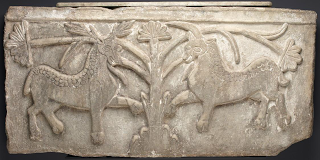
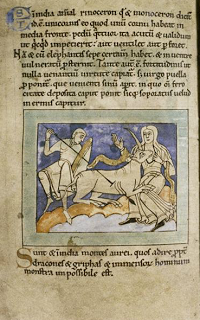
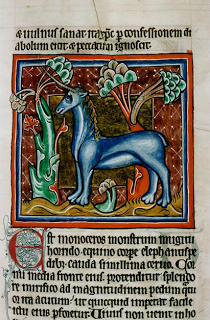
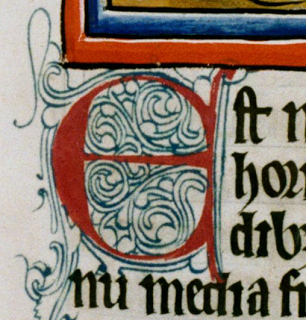
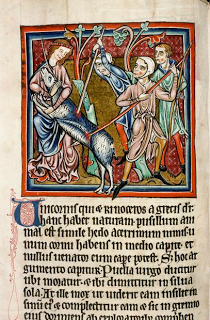

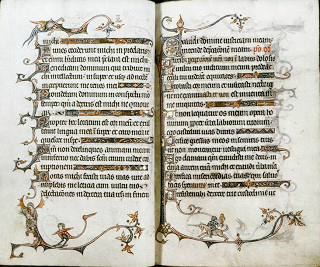
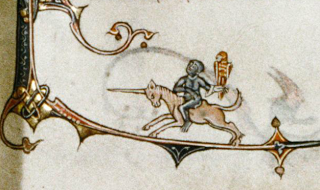
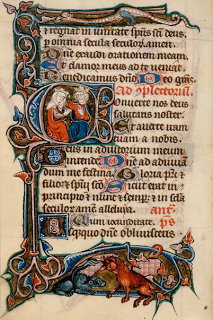
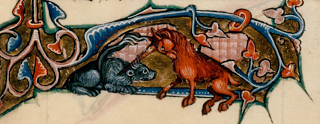
- Medieval Medical Treatises
My five-year-old burned her leg on my curling iron today. I only asked her five times to give me some space in the bathroom BEFORE she knocked the curling iron onto her leg, but whatevs. After I cleaned her up and she was properly bandaged, she was impressed...
- Mermaids
Roman book of hours, whole page, folio 186r. End of fifteenth century, made in Venice or Padua. Historiated initial (D)omine with the Holy Spirit above. Floral border with mermaid and dolphin. Pendant of a mermaid, German. 1580-1590, enameled gold,...
- The Devil In The Details
Book of Hours, folio #: fol. 078r, second quarter of 16th century, French. Shelfmark: MS. Douce 135 Bodleian Library, University of Oxford. "Sutarius", richly dressed youth. Below: Satan and God discuss Job. Gospel Lectionary, Pericope,...
- In Honor Of Francis
In honor of the 266th pontiff of the Catholic church, Jorge Mario Bergoglio, or Francis I. Antiphonal (fragments). Folio #: fol. 009r. 14th century, middle to late, Italian. Fragments (12 leaves) from three(?) Franciscan(?) antiphonals. Pisa, mid and...
- Not A Saint - But A Sinner!
Two bright and acute thinkers put forth that the woman in the last post is not a saint - but one of the Bible's most infamous sinners: Bathsheba. But our Bathsheba would be a most demure temptress, fully clothed as she is. She must have had...
Medieval History
'Monokeros,' or unicorns in imagery and myth, II

Relief showing a Stag and Unicorn, ca. 950, Italian, near Nola. This relief from a church in Nola (near Naples) formed part of a transenna, a low wall that demarcated the church's presbytery, an area reserved for the clergy. The motif of opposed animals and the sacred tree apparently had its origin in Sumerian art, from where it passed to Mediterranean cultures and thence to Europe, assuming a symbolic reference to the Resurrection. Though pairs of stags and pairs of unicorns are common, this is the only known instance of the one animal opposing the other. Their abstract representation may have been influenced by Byzantine and North African textiles, which were widely available in Southern Italy.

Marvels of the East, Folio #: fol. 048v-049r. Middle of twelfth century, English. Hunter lances unicorn in virgin's lap. Copies a prototype of 11th century, probably: London, B.L., Cotton MS. Tiberius B. V.

Bestiary, Folio 022r. Second quarter of thirteenth century, English. Bodleian Library, University of Oxford. Monoceros; mythical beast with unicorn head and paws, horse's body.

Beautiful capital.

Bestiary, Folio #: fol. 010v. Second quarter of thirteenth century. Companion MS. of London, B.L., Harley MS. 4751. Bodleian Library, University of Oxford. Another image of huntsmen slaughtering a unicorn in the maiden's lap...



Psalter, opening. Folio #: fol. 018v-019r. End of thirteenth century, French, made in Artois. Manuscript made for Joffroy d'Aspremont and his wife. Second portion of a Book of Hours, now in Melbourne, National Gallery of Victoria.
I haven't seen a unicorn presented like this before, with a rider and a hawk. Interesting.


Book of Hours. Use of Metz. Penitential psalms. Office for the dead. Folio/Page #: fol. 221v. Beginning of fourteenth century, French, made in Metz. Text: beginning of Compline (Hours of the Virgin). Historiated initial 'C(onuerte)' with Coronation of the Virgin. Christ seated beside kneeling Virgin places a crown on her head. Champ initials and decorated initials with penwork flourishing. Bar border decorated with ivy tendrils, dragon, unicorn fighting other animal (lion?). Bodleian Library, University of Oxford
- Medieval Medical Treatises
My five-year-old burned her leg on my curling iron today. I only asked her five times to give me some space in the bathroom BEFORE she knocked the curling iron onto her leg, but whatevs. After I cleaned her up and she was properly bandaged, she was impressed...
- Mermaids
Roman book of hours, whole page, folio 186r. End of fifteenth century, made in Venice or Padua. Historiated initial (D)omine with the Holy Spirit above. Floral border with mermaid and dolphin. Pendant of a mermaid, German. 1580-1590, enameled gold,...
- The Devil In The Details
Book of Hours, folio #: fol. 078r, second quarter of 16th century, French. Shelfmark: MS. Douce 135 Bodleian Library, University of Oxford. "Sutarius", richly dressed youth. Below: Satan and God discuss Job. Gospel Lectionary, Pericope,...
- In Honor Of Francis
In honor of the 266th pontiff of the Catholic church, Jorge Mario Bergoglio, or Francis I. Antiphonal (fragments). Folio #: fol. 009r. 14th century, middle to late, Italian. Fragments (12 leaves) from three(?) Franciscan(?) antiphonals. Pisa, mid and...
- Not A Saint - But A Sinner!
Two bright and acute thinkers put forth that the woman in the last post is not a saint - but one of the Bible's most infamous sinners: Bathsheba. But our Bathsheba would be a most demure temptress, fully clothed as she is. She must have had...
